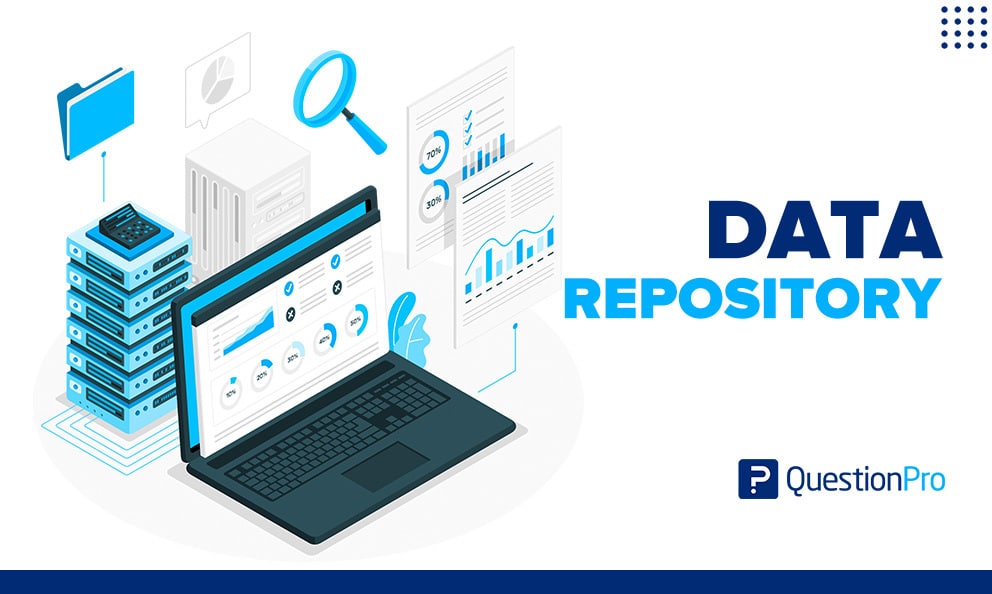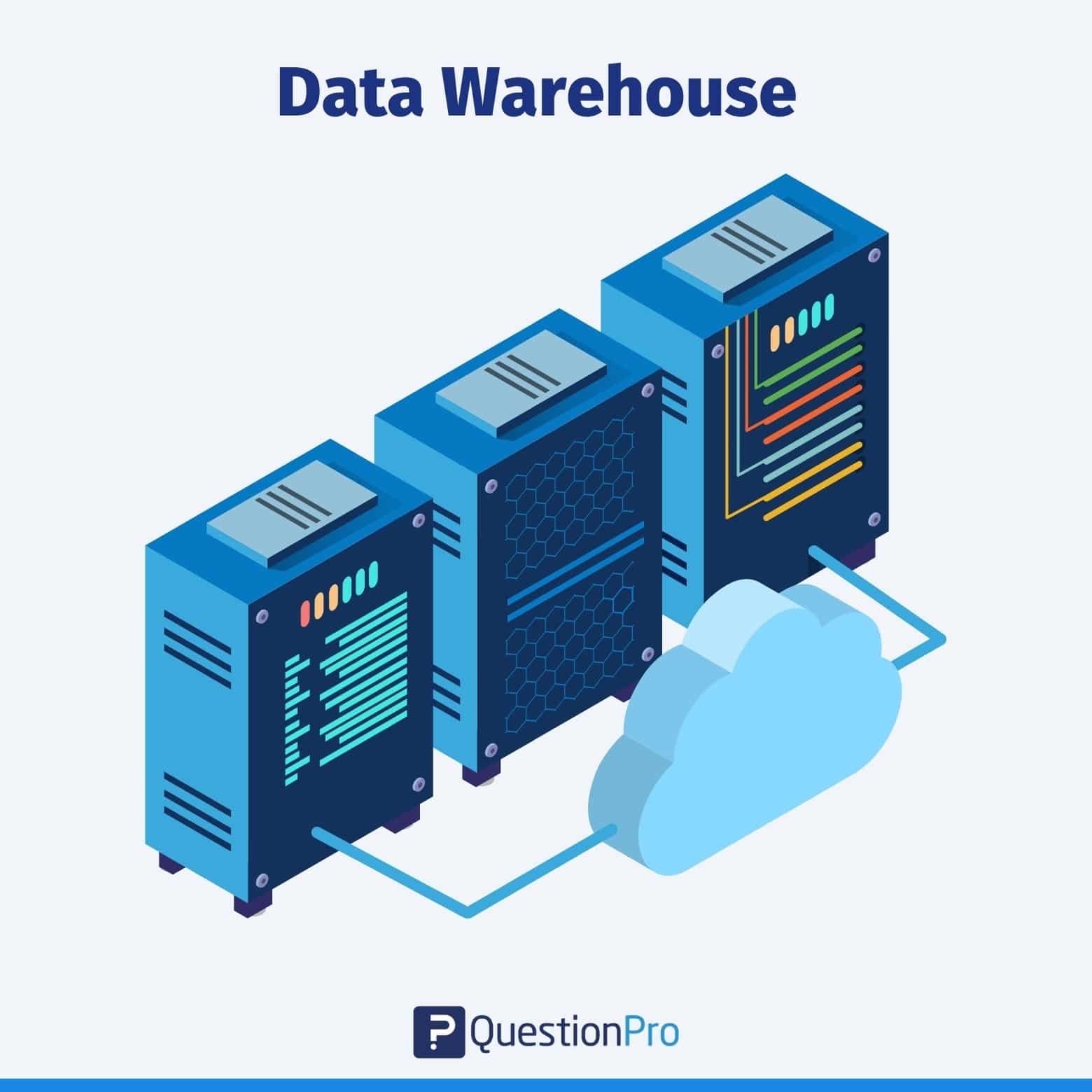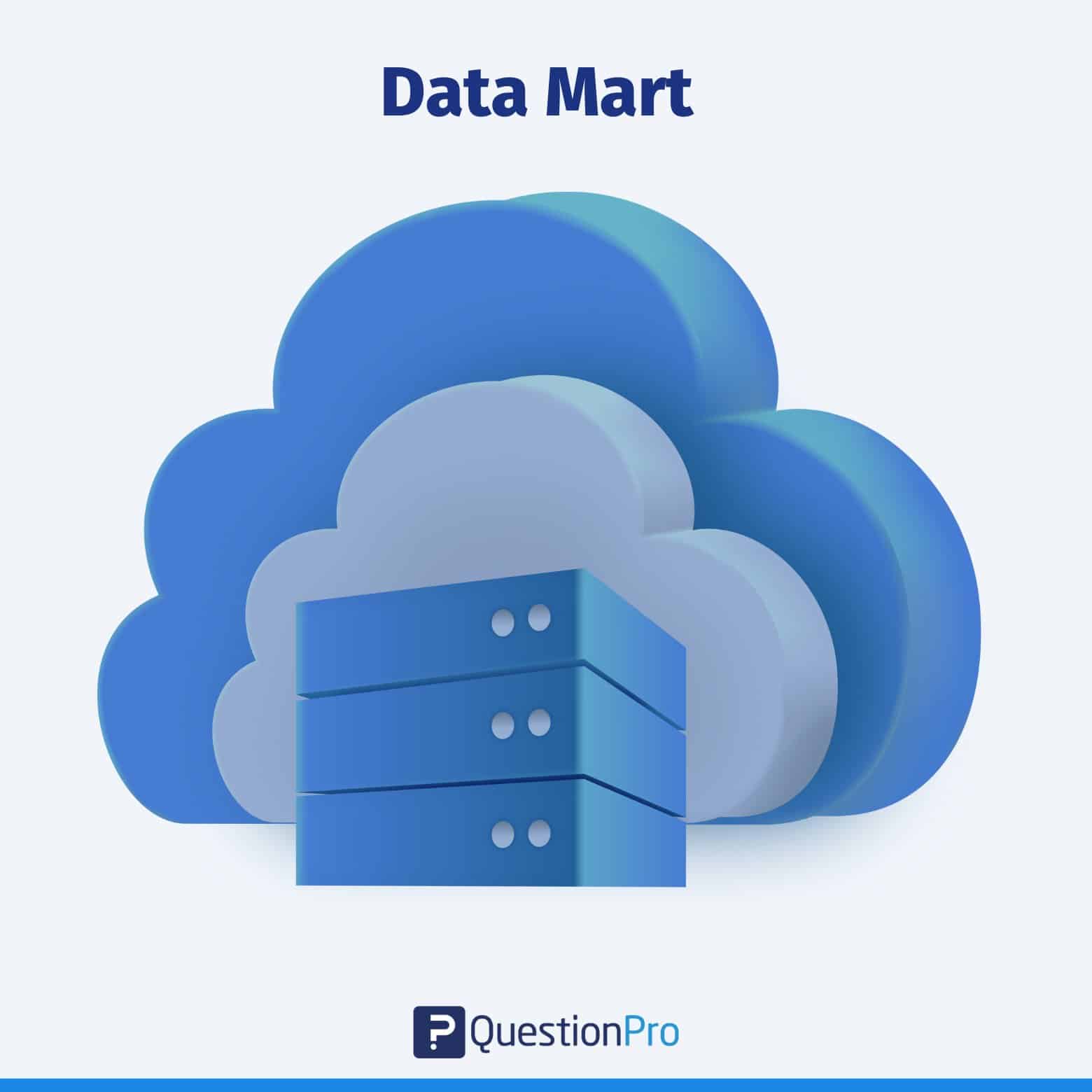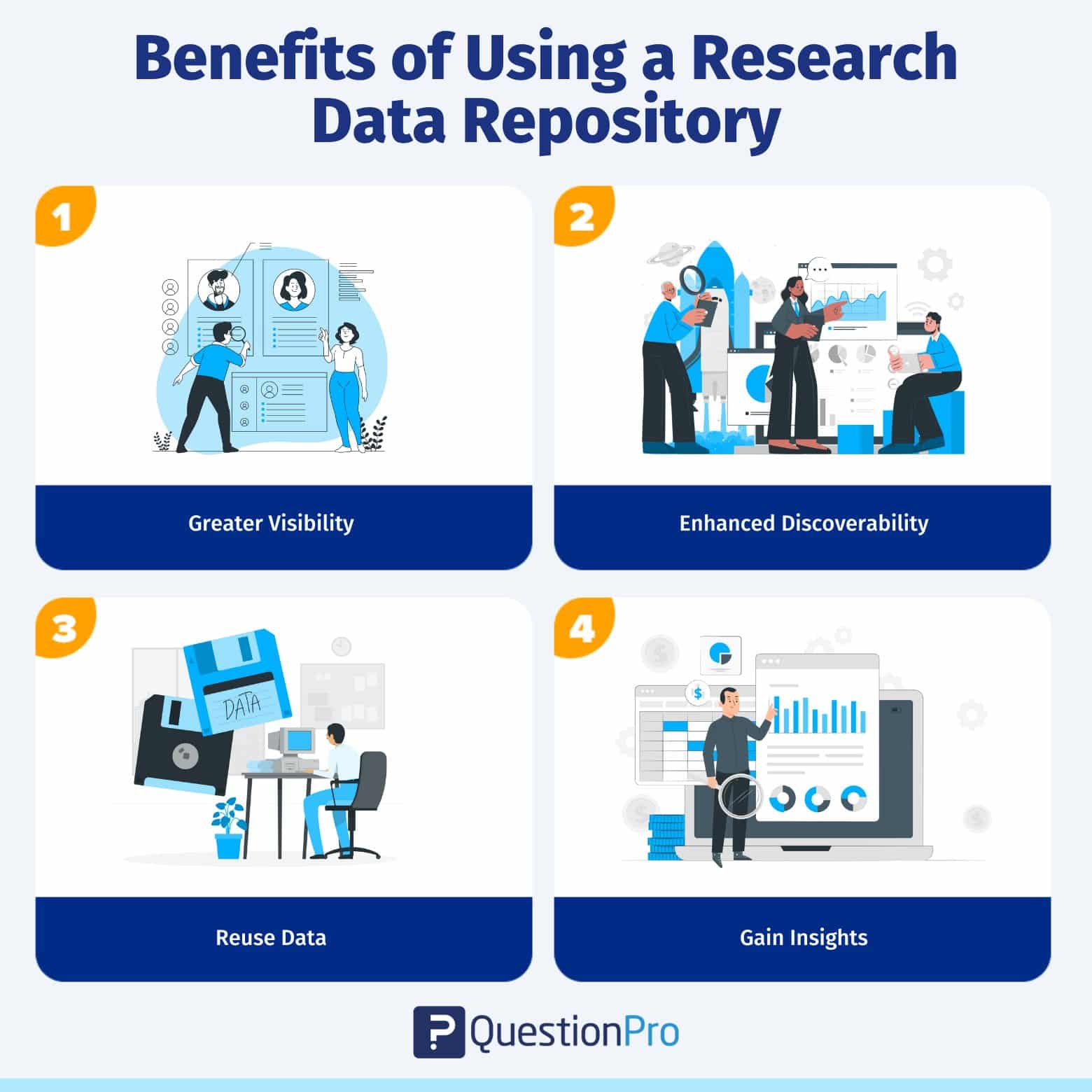
Collecting data isn’t that hard, but what’s hard is creating and maintaining a data repository. Even harder is making sense out of a data repository.
The concept of a data repository has grown popular to manage and utilize data efficiently. A data repository is a centralized storage site that allows for easy access, data management, and analysis.
Here, we start by defining a data repository, explaining how to create one for research insights, and outlining its benefits.
What is a data repository?
A data repository is a data library or archive. It may refer to large database management systems or several databases that collect, manage, and store sensitive data sets for data analysis, sharing, and reporting.
Authorized users can easily access and retrieve data using query and search tools, which helps with research and decision-making. Combining data from different sources, like databases, apps, and external systems, gives a complete and unified view of the data.
Data can be collected and stored in different ways, like aggregated data, usually collected from multiple sources or segments of a business. It can then be stored structured or unstructured and later tagged with different metadata.
The data repository uses structured organization methods, standardized schemas, and metadata to ensure the data is always the same and easy to find. It has tools for storing, managing, and protecting data, such as compression, indexing, access controls, encryption, and reporting.
Data repositories generally maintain subscriptions to licensed data resources so users can access the information.
Data Repository Examples
In the data management industry, various data repositories allow users to make the most of the available information, each with its limitations and characteristics.
Security is crucial as more organizations adopt data repositories to manage and store data. Data repositories are generally categorized into four types of data repositories:
1. Data warehouse

This is the largest repository type, where data is collected from several business segments or sources. The data stored in this repository is generally used for analysis and reporting, which will help the data users or teams make the correct decisions in their business or project.
2. Data lake
In this type of repository, data can be in any form, whether structured, semi-structured, or unstructured. It is a huge storehouse of unstructured data categorized and labeled with metadata.
The main reason for a data lake is the limitation of the data warehouses. It helps to gain better data governance and data governance framework total control of the data it has in it.
3. Data mart

Data marts are often confused with data warehouses. However, they serve different functions.
This subset of the data warehouse is focused on a particular subject, department, or other specific area.
Since the data is stored for a specific area, a user can swiftly access the insights without spending much time searching an entire data warehouse, ultimately making users’ lives easy.
4. Data cube
This repository contains the most complex data in it. It may be described as the multidimensional extensions of different tables, and they’re generally used to represent data that is too complex to be described by just tables, rows, and columns.
So basically, a data cube can be used when we analyze data available to us and beyond 3-D. Here, we’ll particularly talk about data repositories used in market research. We recommend you read this article to delve deeper into the topic: Data Management vs Data Governance
Benefits of using a research data repository
Using research data repositories has many benefits for both researchers and the scientific community as a whole. Here are some significant benefits:

1. Greater visibility
Data saved in data repositories can be viewed anytime. Keeping it siloed in Excel sheets or applications not used by a team reduces its visibility and usability, wasting time and resources.
2. Enhanced discoverability
Saving data in digital format makes it more accessible. Just search for the piece of data you’re looking for, and voila! The metadata added to the data repository enables others to understand and make more sense of the large context.
3. Reuse data
A data repository contains many pieces of data. However, it’s more than just a warehouse. Discrete datasets are joined so that you can derive interesting insights into your area of research and generate various types of reports using the same datasets.
For instance, if you conduct an online survey and collect data from your target audience, you can generate a comparison report to compare responses from various demographic groups. You can also generate trend reports to understand how people’s choices have changed over time. Both of these reports use the same data.
4. Gain insights from multiple sources of data
Integrating data repositories with other applications lets you see a multi-dimensional view of your data. For instance, you can analyze the historical survey data and the actual sales data to understand the accuracy of insights gained in the past.
How to create a Data Repository using online tools?
Creating data repositories for your research data is simple with the right online tools. If you are conducting your research using surveys, communities, focus groups, or any other method, here are some of the ways to create one.
01. Create a questionnaire
Many online tools allow you to drag and drop question types. You can create a survey in under 5 minutes! You can also save time by using a ready-to-use survey template. Customize the template per your needs, and you’re ready.
02. Brand your survey
Customize the header and footer, and add a logo to look more professional. You can also choose a font style and color that suits your brand voice. Branding your surveys increases the chances of getting more responses.
03. Distribute your survey
Many tools offer different ways to distribute your survey, such as email, embedding data on the website, or sharing it on social media sites. You can also generate a QR code or let your audience answer questions using a mobile app.
04. Analyze the data
Finally, once you have collected your data, generating the reports is just a matter of time. Use tools that allow you to create dashboards and generate reports easily.
Best Practices for Creating and Managing Data Repository
Creating and managing a data repository involves several steps and considerations to ensure the data is organized, accessible, secure, and useful. Here are some best practices:
- Define Objectives and Scope: Clearly define the repository’s purpose, what type of data it will store, who will access it, and how it will be used. Understanding these aspects helps in designing an effective repository.
- Data Governance: Establish data governance policies to ensure data quality, security, privacy, and compliance with regulations such as GDPR or HIPAA.
- Data Modeling and Schema Design: Design a logical data model and schema that reflects the structure and relationships of the data. This makes it easier to organize and query the data effectively.
- Metadata Management: Implement a robust metadata management system to document and describe the data stored in the repository.
- Data Storage and Infrastructure: Choose appropriate storage technologies and infrastructure based on the volume, variety, velocity, and sensitivity of your data.
- Data Integration and ETL: Implement processes for extracting, transforming, and loading (ETL) data into the repository from various sources.
- Data Security: Implement security measures to protect the data from unauthorized access, breaches, and cyber threats.
- Data Quality Assurance: Establish processes and procedures for ensuring data quality and consistency. This may involve data profiling, cleansing, deduplication, validation, and monitoring data quality metrics over time.
- Version Control and Change Management: Implement version control and change management processes to track changes to the data repository, including data schema changes, updates, and deletions.
- Documentation and Collaboration: Document all aspects of the data repository, including its architecture, design, policies, procedures, and usage guidelines.
- Backup and Disaster Recovery: Implement regular backups and disaster recovery plans to ensure data availability and resilience in case of hardware failures, data corruption, or other disasters.
- Monitoring and Performance Optimization: Regularly monitor the data repository’s performance and usage and optimize its configuration and infrastructure.
How does QuestionPro help implement data repositories?
QuestionPro is a powerful online survey and research platform that collects, analyzes, and manages data. It mostly creates surveys, collects data, and helps establish and maintain data repositories. QuestionPro helps data repository management in several ways:
- Data collection: QuestionPro lets you develop and send surveys to collect data. Surveys can use multiple-choice questions, rating scales, and open-ended questions. This data collection process provides important data for your data repositories.
- Data Management: With QuestionPro, you can effectively organize and manage your gathered data. It filters, categorizes, and validates data to ensure accuracy and quality.
- Data Analysis: QuestionPro has built-in tools to help you examine and visualize your data. You can create reports, charts, and graphs based on survey answers to help you find trends, patterns, and insights. The analysis results can be saved in your data repository.
- Real-time Reporting: Real-time reporting lets you view and analyze your data. After collecting replies, you may instantly generate reports to assess trends and progress and make data-driven decisions.
- Data Security: QuestionPro prioritizes data security. It encrypts, transfers, and restricts data access to prevent data breaches. This ensures that the data in your repository is safe and that users’ privacy is protected.
- Data Integration: QuestionPro integrates with Excel, Google Sheets, and SPSS. This connection lets you import external data or survey responses into your data repositories for analysis and storage.
Data collecting, customer data integration, management, analysis, and security features in QuestionPro can help you manage your repository. It’s useful for data repository management since it centralizes data collection, storage, and analysis.
Learn more about best data collection tools to help you choose the best one.
If you need help conducting research or creating a data repository, contact our team of experts. We can guide you through the process and help you maximize your data.
Frequently Asking Questions (FAQ)
Your data repository should suit your demands. Choose a popular and relevant repository for your research domain that supports your data format.
Data repositories are managed digital environments that specialize in gathering, characterizing, distributing, and tracking research data. Sharing data in a repository is a best practice that is frequently mandated by federal authorities.
The difference between a database and a data repository lies in its functionality, the former is only a data storage system while a data repository is a data management system.







